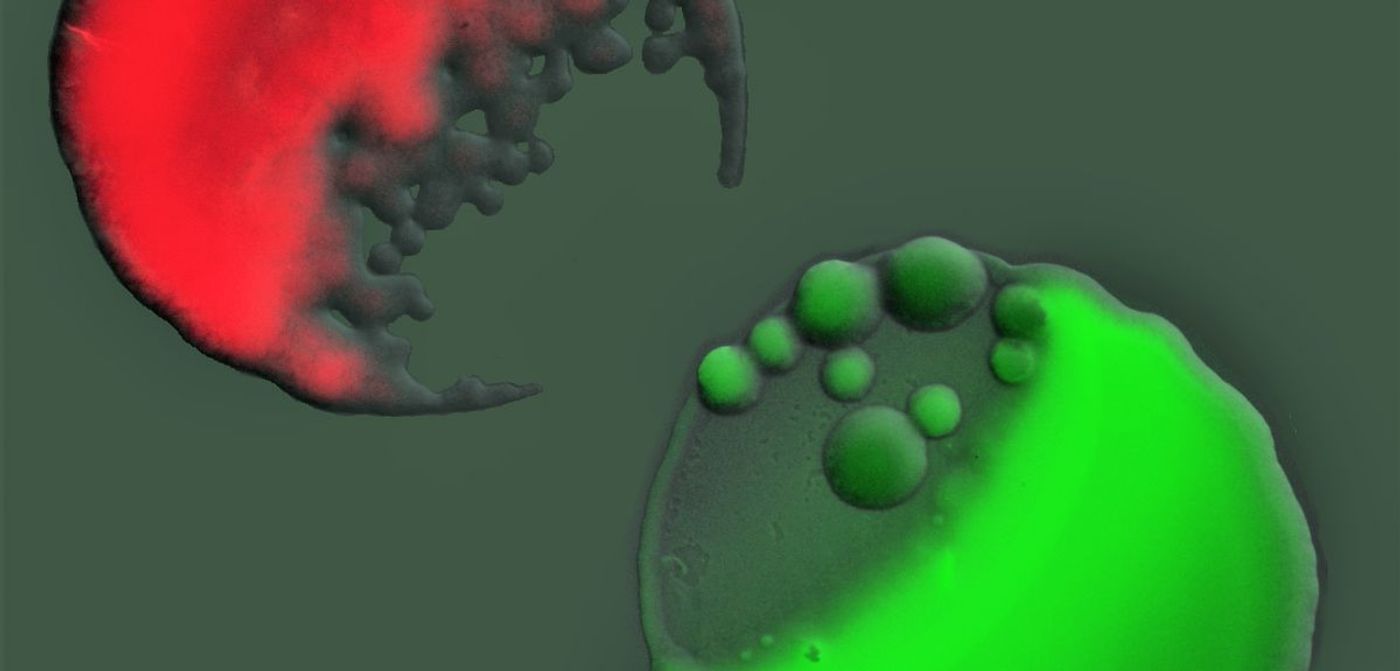The Art of Bacterial War Focuses on Collective Retaliation
For the first time, scientists have observed in real-time the ability of bacteria within a colony to collectively predict and respond to an incoming attack by an another colony. This discovery has important implications for understanding both the healthy bacteria that live in the human body and the bacteria responsible for spreading disease.
We usually imagine bacteria as fighting humans, not as fighting each other. But bacteria-bacteria combat is more common than one might think, and for good reason. Often different strains of bacteria have to fight for space or energy sources. This competitive interaction brings bacteria within a colony together to fight off other colonies around them.
From the University of Oxford, researchers studied the way individual bacterial strains approach conflict. They used two strains of Escherichia coli, pitting them against each other. Each strain was engineered to have either fluorescent green or red colors so the Oxford scientists could “follow their combat in real time.” They saw that each strain produced their own toxin as a weapon against the other strain, but the bacteria were not negatively affected by their own toxin.
After watching the two strains “fight” each other, the researchers realized that not all bacteria approach conflict in the same way. Some strains are passive, and some are aggressive. Many seem to have unique techniques for attacking other strains. Some bacteria, typically those on the edge of the colony, can detect an attack from an incoming toxin and use the time before its arrival to “warn” the rest of the colony. Then, the colony as a whole responds to the incoming attack.
“Their behavior is more complex than we have previously given them credit for,” said senior author Kevin Foster. “Much like social insects, such as honey bees and wasps and social animals like birds and mammals who use alarm calls, when under predation, they are capable of generating a coordinated attack.”
For healthy bacteria living in the human body, namely the gastrointestinal (GI) tract (the “gut microbiome”), it’s particularly important that they employ techniques to fend off other, potentially harmful strains of bacteria. These colonies fight other colonies, likely foreign bacterial species that could be harmful to the human body or disrupt the equilibrium of the microbiome.
“Warfare based on provocation can be beneficial,” explained lead author Despoina Mavridou. “It is most likely taking place in the gut, where bacteria may provoke multiple opponents to attack and wipe out each other.”
Sources: University of Oxford, Current Biology









